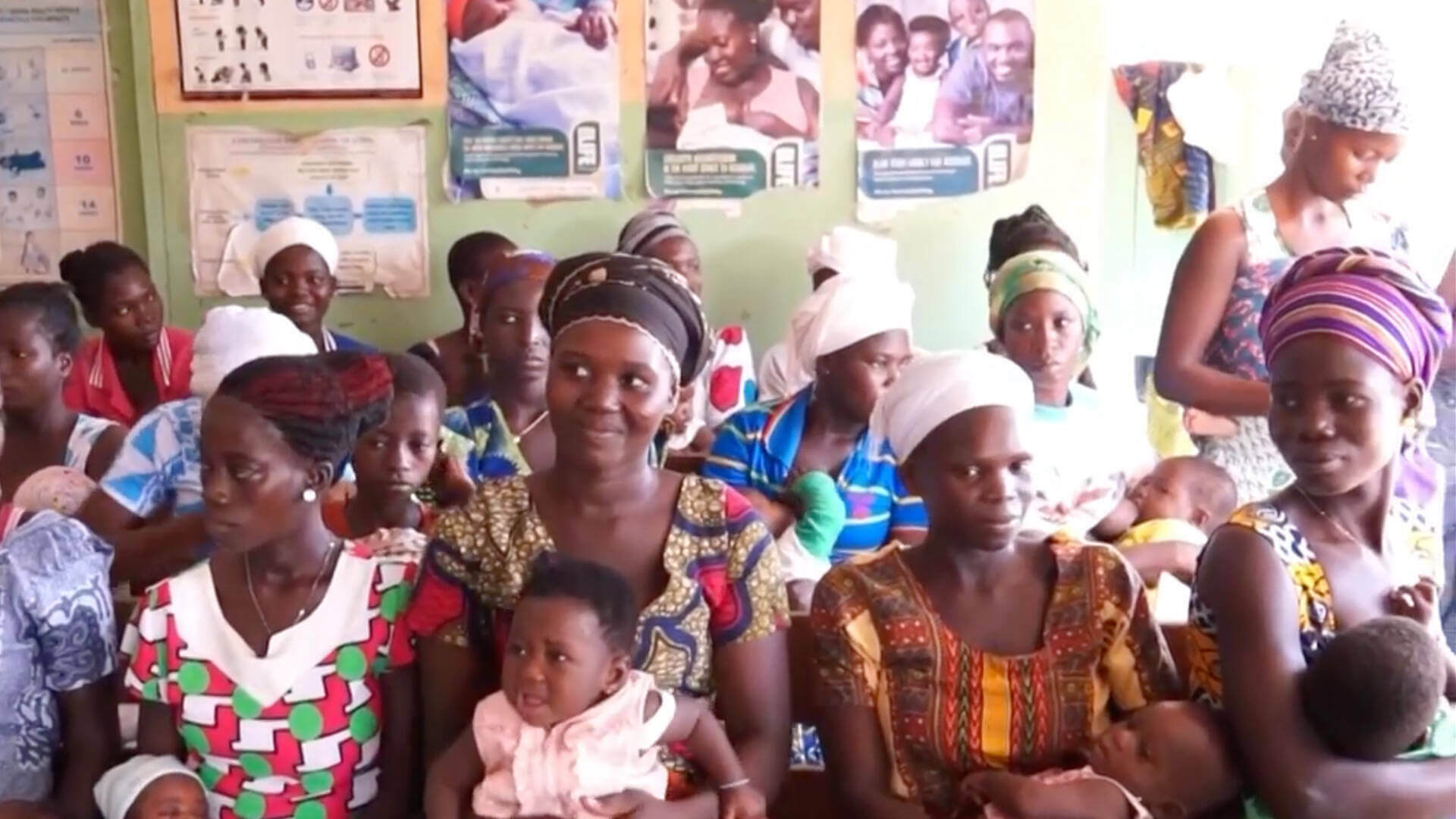Our Approach
Educational and empowerment interventions that leverage technology and data to reduce maternal and infant mortality in rural Ghana

Overview
The Technology for Maternal and Child Health (T4MCH) intervention was first piloted in 2011 in three health facilities in one district. Since then, T4MCH has undergone three phases of scale-up. The most recent scale-up was from 2016 to 2020 during which the intervention was implemented in 33 health facilities in nine districts of the Upper West Region and the former Northern and Volta Regions of Ghana (now split into Savannah, Northern, North East, Oti, and Volta Regions). The intervention included 1) a voice and text messaging service connecting pregnant women and new mothers with targeted health information in 11 local languages, 2) provision of equipment and training in ICT and presentation skills for health facility staff, 3) delivery of information to pregnant women, breastfeeding mothers, and their families using audio visual content at the community level and in health facilities in knowledge sharing sessions (KSS), 4) livelihood, empowerment, and advocacy program, 5) reporting of health data using “SGS collect” a mobile data collection app, and 6) pilot implementation of a Ghana specific community Electronic Medical Records (cEMR) system.
As a result of this intervention, the total number of skilled deliveries increased from 7,840 to 10,364 from 2015 to 2019. The maternal mortality ratio dropped by almost 200% from 153.1 to 77.2 – considerably below the Ghana Health Service (GHS) national target of 140 maternal deaths per 100,000 births. Additionally, there was almost universal adoption (over 99%) of positive newborn care practices, such as drying and wrapping immediately after birth. Additional results can be found here.
Given that the T4MCH intervention has undergone three successful phases of scale-up and has resulted in improved maternal and infant outcomes, our goal is to further scale-up, strengthen, and evaluate this intervention in 25 districts (from nine districts in the previous implementation) within five regions of Ghana (Upper East, North East, Northern, Oti, and Volta Regions), reaching a total of 125 health facilities. The next scale-up phase of Technology for Maternal and Infant Health (T4MIH) will include strategically improved data collection capabilities to support healthcare workers, provide tailored advice to women, inform policy briefs, and secure buy-in with the GHS and the Ministry of Health.
Visit the intervention pages to learn more about the components shown below:
Mobile Health: We will scale-up, strengthen, and evaluate the mobile health (mHealth) intervention that allows pregnant and postpartum women, partners/husbands, or other relatives to receive and send voice and text messages that bridges health information gaps and increases the demand for and access to skilled healthcare services. The incorporation of an AI-based triage mechanism within this implementation will ensure that women and adolescent girls can quickly receive actionable responses to urgent health questions or challenges.
Data for Policy and Advocacy: We will expand the previously piloted community Electronic Medical Records (cEMR) platform to streamline data collection and provide opportunities to identify key maternal and infant health indicators that healthcare workers can use in tailoring services and messages for the most marginalized women, adolescents, and infants. The platform provides relevant information that can guide policy making and advocacy efforts at and beyond the community level, as well as collaboration with the Ministry of Health, the Ghana Health Service, and other stakeholders.
Knowledge Sharing Sessions: We will continue to strengthen the information and communications technology (ICT) capacity of midwives/nurses and community health workers so that they implement routine KSS in health centers and within communities. These sessions are designed to increase awareness and understanding of maternal and infant health issues among various stakeholders, while addressing community-specific health challenges that have cultural or religious underpinnings. Furthermore, improving community understanding of critical complications and their warning signs ensures that women and adolescent girls are empowered with health-related decision-making abilities.
Livelihood, Empowerment, and Advocacy Program: Given the successful implementation of the Livelihood, Empowerment, and Advocacy Program (LEAP) for pregnant adolescent girls and young mothers in nine districts, we will expand this program to 25 districts to ensure that the most marginalized individuals can gain emotional and financial support as well as increased access to key maternal and infant health services, ultimately improving well-being for mothers and infants.